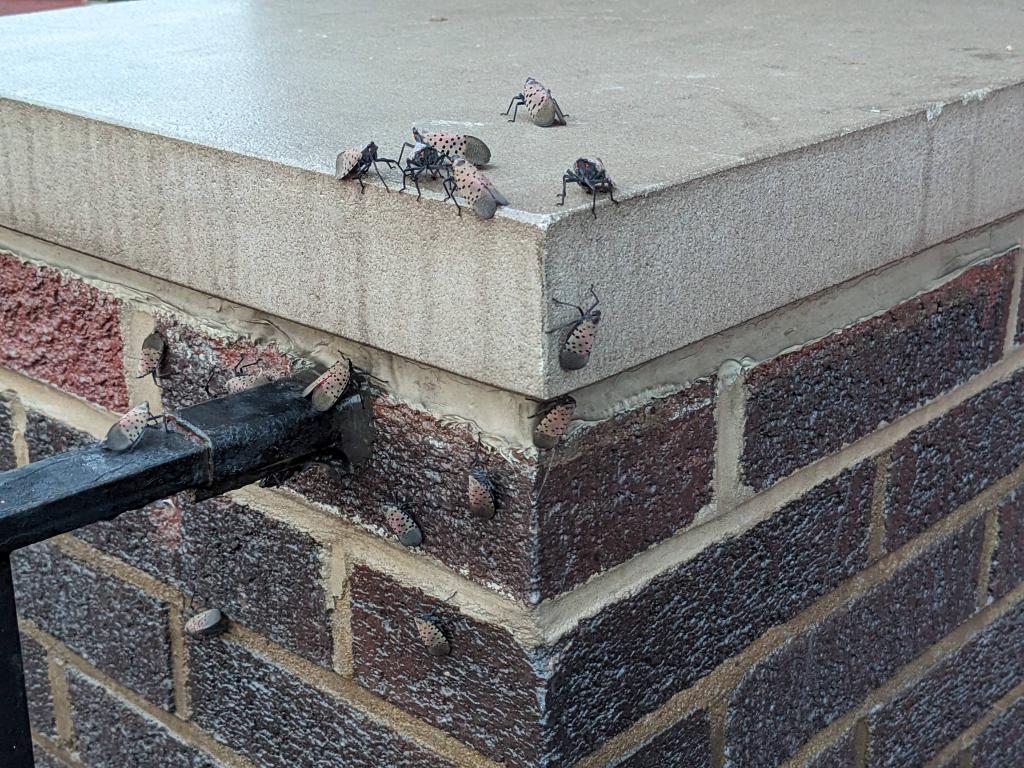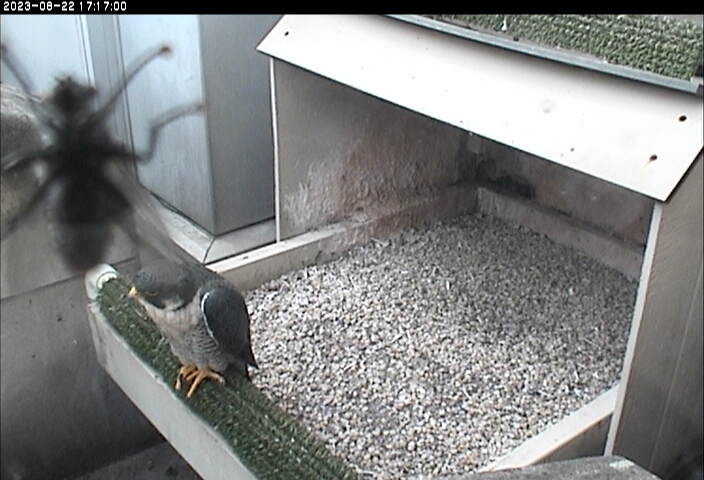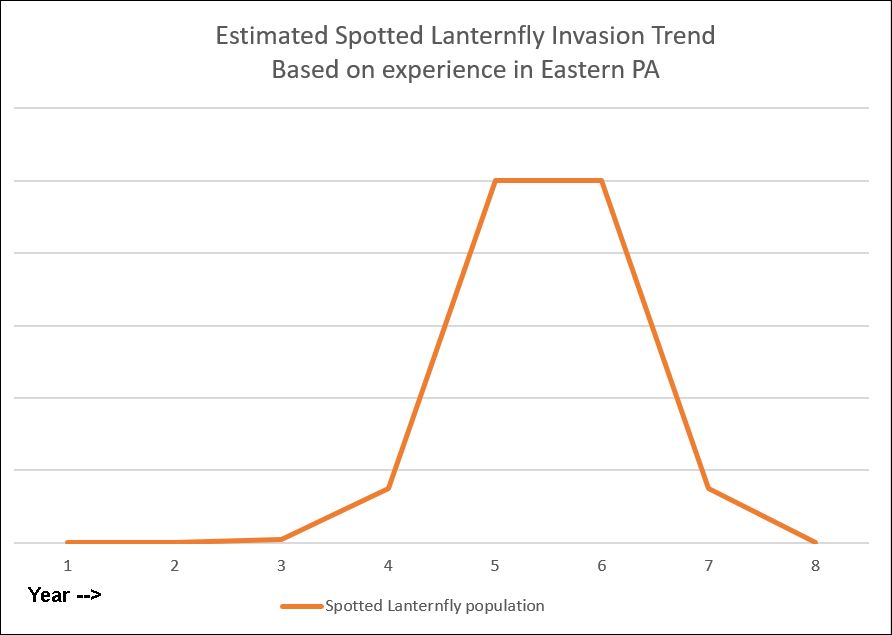
24 August 2023
Spotted lanternflies (Lycorma delicatula) are everywhere in the East End of Pittsburgh and along our rivers and railroads. One even triggered a snapshot on the motion detection camera at the Pitt peregrine nest. Aaarrg!

Right now, while the invasion is getting worse by the day, it is hard to imagine a time without them but that day will come. The bugs have daily, seasonal and annual cycles and their population trend goes down, based on what happened in eastern PA where they were first detected. Let’s take a look.
Daily dispersal, nightly roost. During the day adult lanternflies disperse to the sky but at dusk they land on buildings and trees to “roost” overnight. Dusk is an unpleasant time of day as they aggregate near us but it’s a good opportunity to catch them with a water bottle (video shows how). [Put a lid on the bottle and the bottle in the freezer. They die in the cold.]
Seasonal disappearance of adults in late fall. Spotted lanternfly adults mate and lay eggs in late summer and fall. Winged adults started to appear in July in Pittsburgh but they did not reach a crescendo until mid-August. They’ll be present in September and October and completely die off at the first frost. I expect their presence to taper before they disappear.
I have not been able to find out if the individuals die shortly after mating and laying eggs but if so the population would taper quickly. I’ll know more in November.
Invasion lasts two to three years based on experience in Eastern PA.
Lanternflies were a plague in Berks County(*) in 2018 and 2019 but by 2021 they were hard to find. That year the Reading Eagle wrote “Where have all the spotted lanternflies gone?“
Similarly the bugs plagued Philadelphia in 2020 but reports went down 95% in 2022 and this month the Philadelphia Inquirer asks Should we still care about spotted lanternflies in 2023? and What should you do if you see spotted lanternflies?
Notice that Philadelphia is saying “IF you see spotted lanternflies,” not “WHEN you see spotted lanternflies!”
Based on these reports I’d say the infestation lasts two to three years and then drops to an unremarkable level. It seems to be a bell curve.

The Pittsburgh area has had spotted lanternflies since 2020. This summer we are in the first plague year (Year label 5). Next summer will be bad, too, but by 2025 or 2026 they’ll be virtually gone.
This, too, shall pass.
p.s. Great News! Two naturally occurring native fungi infect and kill spotted lanternflies in great numbers. Batkoa major and Beauveria bassiana decimated the spotted lanternfly (Lycorma delicatula) populations near Reading, Pennsylvania in 2019. Fingers crossed!
(*) Berks County in 2014 is the location where spotted lanternflies were first identified in the U.S.
(photo by Kate St. John and from the National Aviary snapshot camera at Univ. of Pittsburgh, graph by Kate St. John)
I wonder what do you do with the bugs once you catch them in a bottle?
Mary, the video says to freeze the bottle. That kills all of them, then you dump them outdoors and can start over with the same bottle..
I live in Oxford PA in SE PA. We we’re inundated with Spotted Lanternflies the last two years…they decimated my grapes amongst other things. This year I decided to take action. I sprayed the areas where I saw nymphs this past spring with beauveria Bassiana. As the weeks passed I continued to see nymphs here and there every day. I sprayed these areas with a combination of neem oil and dish detergent through a garden hose dispenser until one day…poof…the nymphs were all gone. And I have not seen an adult this year. What happened? Did the bassiana get them? The neem oil/dish detergent? Have the catbirds wised up? How about yellow jackets? All I know is I haven’t seen one since early July and I havent read anything that that I am truly confident explained what happened. You know, if its cyclical, I want to be prepared.
Wow, Dale, what a miracle! Fingers crossed that they don’t come back.